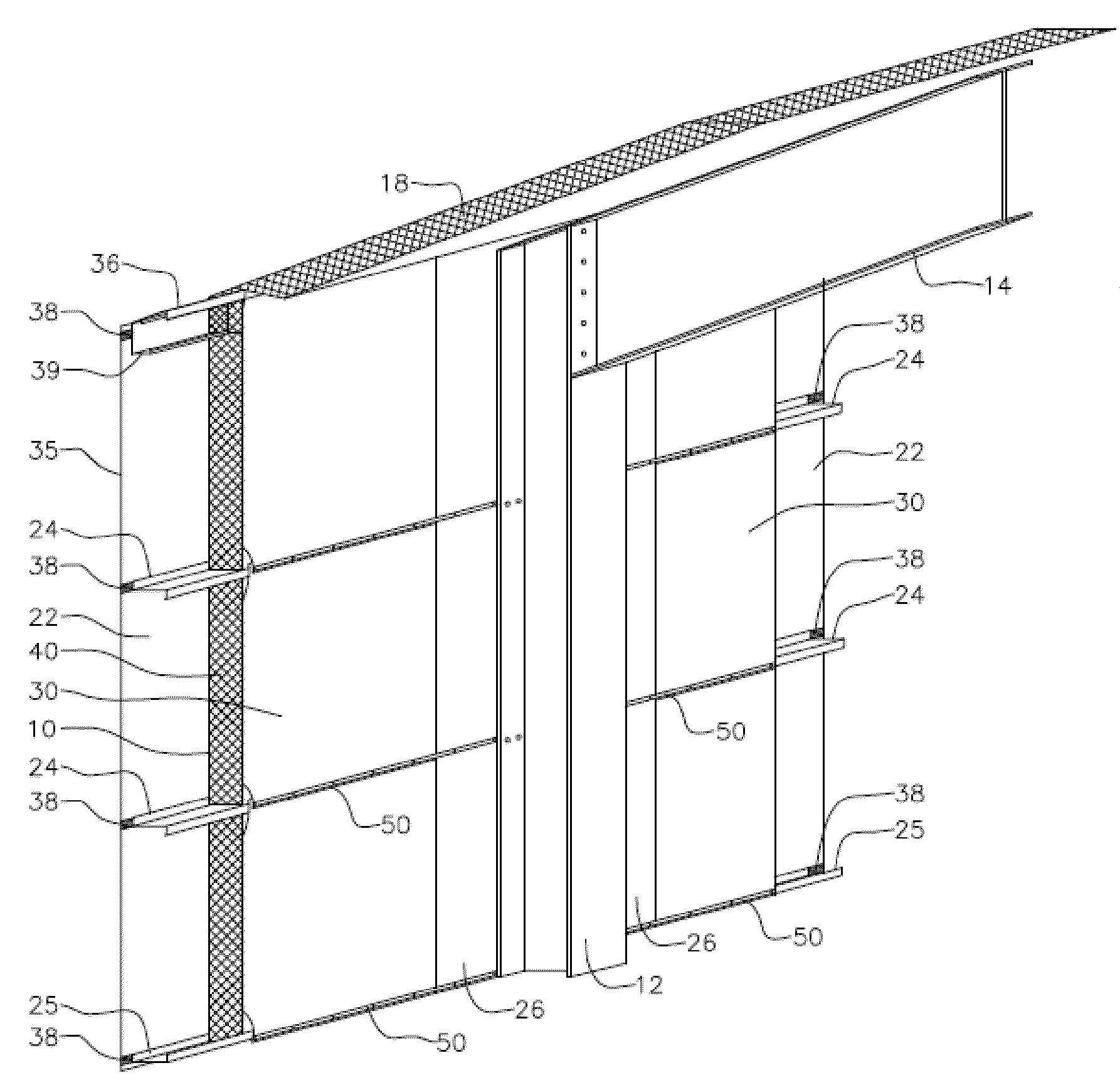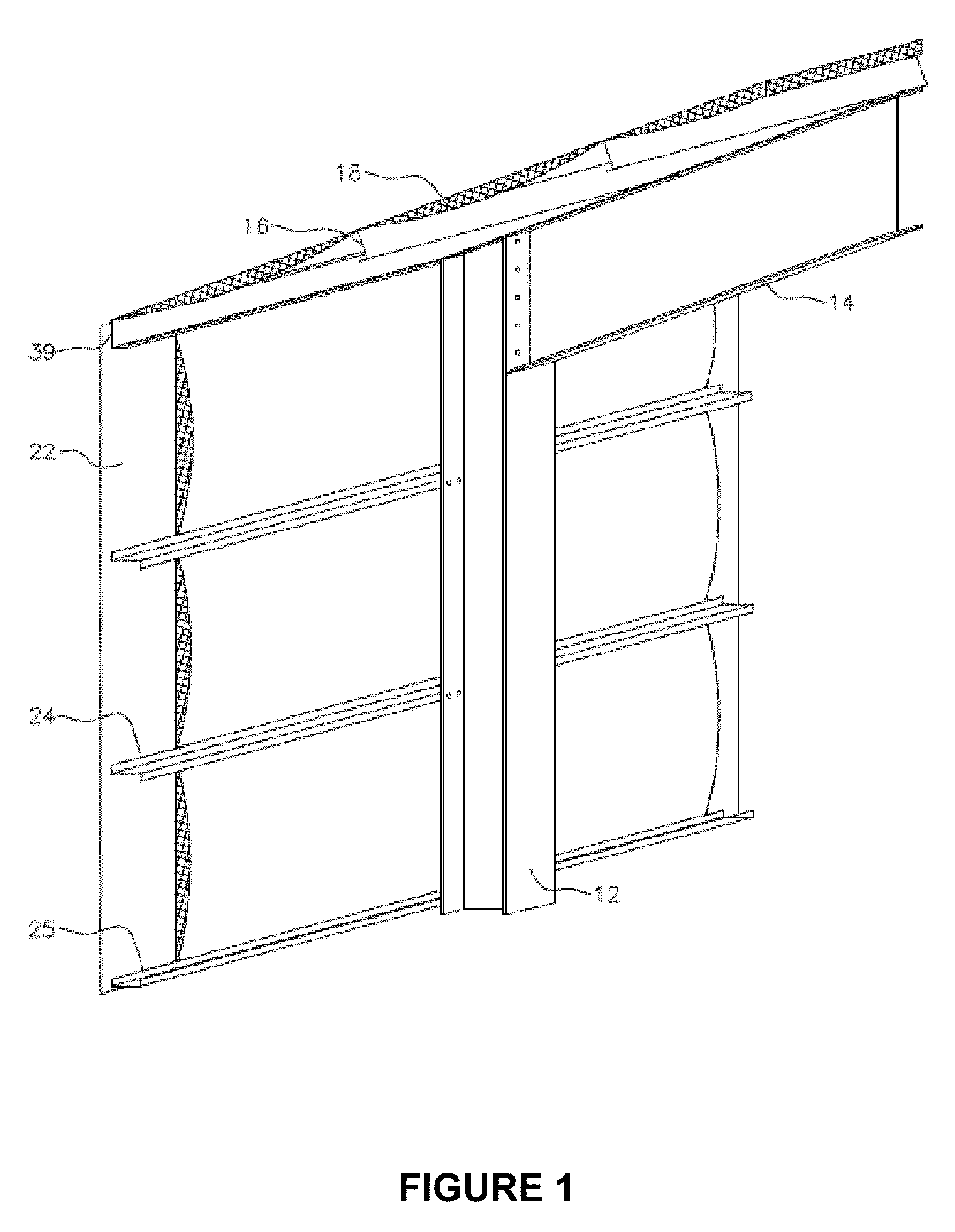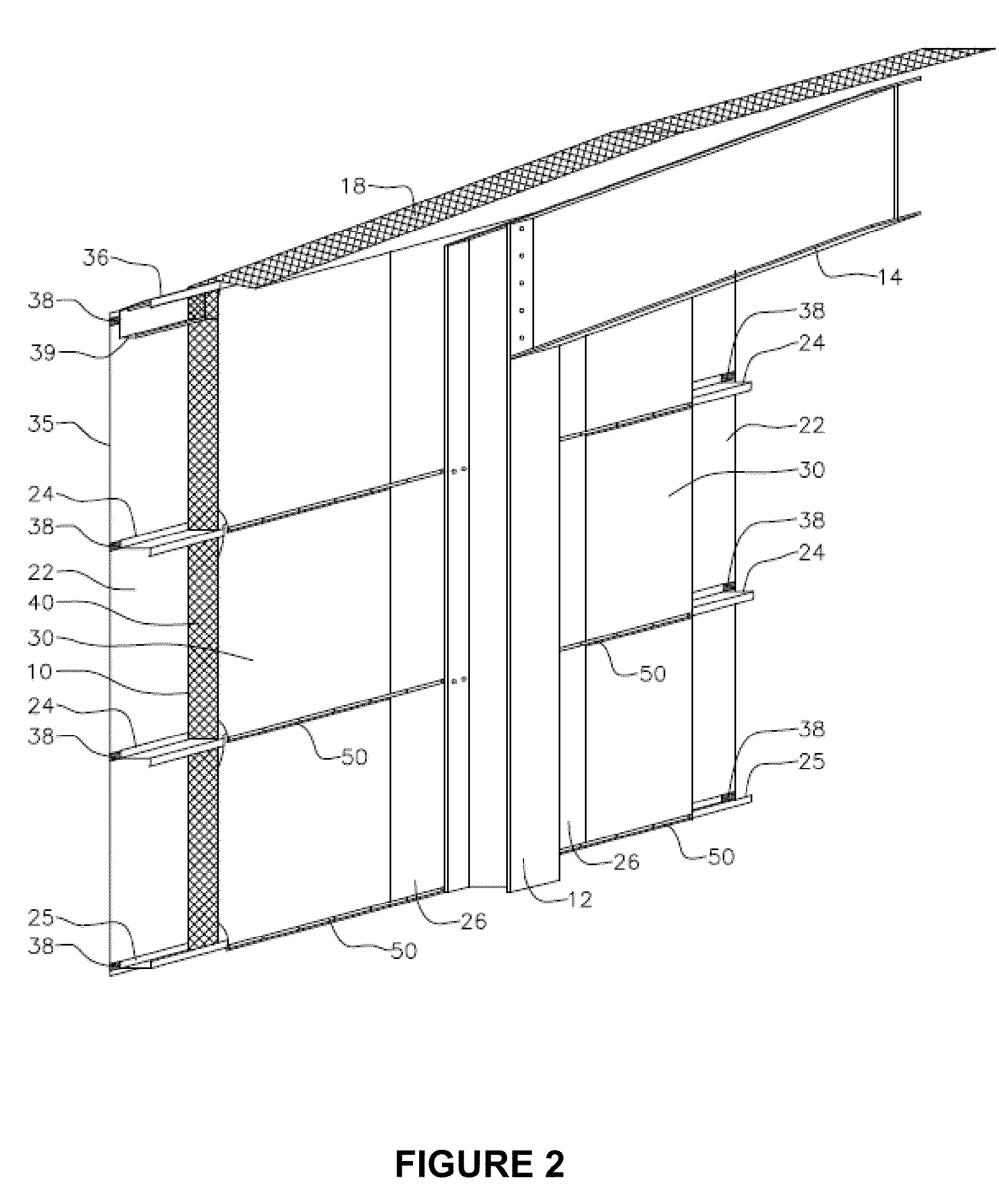Insulation system and method for pre-engineered buildings
a technology for pre-engineered buildings and insulation systems, applied in heat-insulating buildings, industrial buildings, building repairs, etc., can solve the problems of reducing the heat insulation properties of blankets by a substantial amount, the thickness and corresponding rsi value of the wall insulation applied in blanket form has been functionally limited to 6 inches, and the weight of heavier insulation is difficult to manually support, so as to avoid compression effect of insulation
- Summary
- Abstract
- Description
- Claims
- Application Information
AI Technical Summary
Benefits of technology
Problems solved by technology
Method used
Image
Examples
Embodiment Construction
[0033]As used herein and in the claims, the word “comprising” is used in its non-limiting sense to mean that items following the word in the sentence are included and that items not specifically mentioned are not excluded. The use of the indefinite article “a” in the claims before an element means that one of the elements is specified, but does not specifically exclude others of the elements being present, unless the context clearly requires that there be one and only one of the elements.
[0034]As used herein and in the claims, the terms “side”, “end”, “vertical”, “horizontal”, “upper”, “lower”, “top” and “bottom”, and other like terms indicating relative positions above or below or to the side of a given point or element, are used in this description or figures to more clearly describe some embodiments of the invention. However, when applied to systems and methods for insulating pre-engineered buildings, such terms may refer to another relationship as appropriate. The term “exterior...
PUM
 Login to View More
Login to View More Abstract
Description
Claims
Application Information
 Login to View More
Login to View More - R&D
- Intellectual Property
- Life Sciences
- Materials
- Tech Scout
- Unparalleled Data Quality
- Higher Quality Content
- 60% Fewer Hallucinations
Browse by: Latest US Patents, China's latest patents, Technical Efficacy Thesaurus, Application Domain, Technology Topic, Popular Technical Reports.
© 2025 PatSnap. All rights reserved.Legal|Privacy policy|Modern Slavery Act Transparency Statement|Sitemap|About US| Contact US: help@patsnap.com



